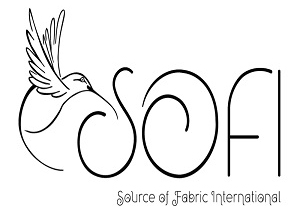Buying fabric wholesale can unlock a world of possibilities for designers, crafters, and businesses looking to save money while accessing high-quality materials. With the right approach, anyone can tap into the benefits of wholesale purchasing, transforming their creative projects without breaking the bank.
Understanding the ins and outs of the wholesale fabric market is essential for making informed decisions. From finding reliable suppliers to negotiating prices, it’s crucial to know the steps that lead to successful purchases. This guide will explore effective strategies to navigate the wholesale fabric landscape, ensuring every buyer can make the most of their investment.
Understanding Wholesale Fabric Buying
Buying fabric wholesale means purchasing large quantities directly from manufacturers or distributors. This process offers several advantages for designers, crafters, and businesses.
What Is Wholesale Fabric?
Wholesale fabric includes materials sold at discounted prices in bulk. Retailers or individuals typically buy wholesale to reduce costs and have a wider selection. Wholesale suppliers usually require minimum order quantities, ensuring that buyers get significant discounts compared to retail prices.
Benefits of Buying Fabric Wholesale
- Cost Savings: Lower prices per yard or meter make wholesale purchases more economical.
- Variety: Access to a broader range of fabrics, colors, and patterns not always available at retail stores.
- Quality: Many wholesale suppliers offer high-quality materials directly from manufacturers.
- Consistent Supply: Ability to order large quantities ensures consistent access to materials for ongoing projects.
- Bulk Discounts: More significant purchases often lead to additional savings and incentives from suppliers.
Identifying Your Needs
Identifying specific needs is crucial when buying fabric wholesale. Understanding the types of fabrics and determining quantities can help in making informed choices.
Types of Fabrics to Consider
Different fabric types serve various purposes. Key types include:
- Cotton: Versatile and breathable, ideal for clothing and home textiles.
- Polyester: Durable and easy to care for, suitable for activewear and outdoor products.
- Silk: Luxurious and soft, often used for formal wear and high-end items.
- Linen: Lightweight and breathable, perfect for summer clothing and home decor.
- Wool: Warm and insulating, great for winter wear and blankets.
Each fabric type offers unique qualities, making it essential to choose based on the intended use.
Determining Quantity and Budget
Setting a quantity and budget streamlines the purchasing process. Consider the following steps:
- Estimate fabric needs: Calculate the amount based on project size and number of items.
- Set a budget: Establish a clear budget to prevent overspending.
- Account for extras: Add 10-15% to the total quantity for mistakes or adjustments.
- Research prices: Compare prices from various suppliers to find the best deal.
By defining quantity and budget, buyers can make decisions that fit their financial limits while meeting project needs.
Finding Reliable Suppliers
Finding reliable suppliers is crucial for purchasing fabric wholesale. A well-chosen supplier helps ensure quality materials and favorable prices.
Researching Wholesale Fabric Dealers
Research wholesale fabric dealers by checking online marketplaces and directories. Look for well-known platforms like Alibaba, Wholesale Central, or Fabric.com. Seek out local suppliers by visiting trade shows or fabric expos, where various dealers showcase their offerings. Read customer reviews and ratings to gauge dealer reputations. Pay attention to the types of fabrics available and their price ranges.
Evaluating Supplier Credibility
Evaluate supplier credibility by checking their business history and industry experience. Ask for references or case studies from previous clients to understand their reliability and service quality. Verify if the supplier can provide samples to assess fabric quality before placing a bulk order. Confirm that the supplier adheres to standards and certifications, such as ISO or OEKO-TEX. Ensure clear communication with the supplier, discussing terms, delivery timelines, and payment options to foster a positive working relationship.
Navigating the Purchasing Process
Buying fabric wholesale involves a straightforward process. Understanding each step ensures a successful purchase and smooth experience.
Placing Orders with Suppliers
Placing orders with suppliers requires clarity. Specify the type of fabric needed, including colors and patterns. Provide precise measurements to prevent errors. Request a quote to understand the total cost, including any discounts for bulk purchases. Confirm details like payment methods and terms before finalizing the order. After placing the order, keep communication open to track progress and address any questions.
Understanding Shipping and Handling
Understanding shipping and handling is crucial for timely delivery. Review shipping options offered by suppliers and choose the one that fits the budget and timeframe. Confirm delivery dates and any additional fees that might apply, such as handling charges or customs fees for international shipments. Ensure the shipping method protects the fabric during transport. Keep records of shipping documents for future reference.
Transform Your Projects with Source of Fabric
Ready to elevate your designs with high-quality wholesale fabrics? At Source of Fabric, we offer an extensive selection of premium materials at unbeatable prices. From versatile cotton to luxurious silk, find everything you need to bring your creative visions to life.
Shop Wholesale Fabrics Now
Conclusion
Buying fabric wholesale opens up a world of possibilities for designers and crafters. By understanding the market and finding reliable suppliers, it’s possible to secure high-quality materials at competitive prices. With careful planning and clear communication, buyers can navigate the purchasing process smoothly.
Identifying specific needs and budgeting appropriately ensures that projects are well-supported. By following the outlined strategies, anyone can make informed decisions that lead to successful fabric purchases. Embracing the wholesale route not only enhances creativity but also promotes cost efficiency, ultimately benefiting any fabric-related endeavor.
Frequently Asked Questions
What are the benefits of buying fabric wholesale?
Buying fabric wholesale provides several advantages, including lower prices per yard or meter, access to a wider range of fabrics and colors, and the ability to purchase high-quality materials. Wholesale purchasing also ensures a consistent supply for ongoing projects and can often lead to bulk discounts, resulting in significant savings for designers, crafters, and businesses.
How can I find reliable wholesale fabric suppliers?
To find reliable wholesale fabric suppliers, research online marketplaces and directories. Attend trade shows or fabric expos to meet suppliers directly. Evaluate their credibility by checking their business history, asking for references, and verifying their ability to provide fabric samples before making a purchase.
What types of fabric should I consider when buying wholesale?
When buying fabric wholesale, consider various types such as cotton, polyester, silk, linen, and wool. Each fabric type serves different purposes, so it’s important to identify your specific needs based on the projects you plan to undertake. This will guide your selection when purchasing.
How do I determine the right quantity of fabric to buy?
To determine the right quantity, estimate your fabric needs based on your project requirements. Set a budget and account for extra fabric to avoid running out. Research prices from different suppliers to ensure you stay within your budget while meeting your project’s needs.
What should I include when placing an order with a fabric supplier?
When placing an order, clearly specify the type of fabric, desired colors, patterns, and precise measurements. This clarity helps avoid misunderstandings and ensures you receive exactly what you need. Requesting quotes will also help you understand the total costs involved before finalizing the purchase.
How can I ensure proper shipping and handling when buying fabric wholesale?
To ensure proper shipping and handling, review shipping options provided by your supplier and confirm delivery dates. It’s essential to ensure the fabric is properly protected during transportation. Communicate your requirements with suppliers to avoid potential issues during delivery.


